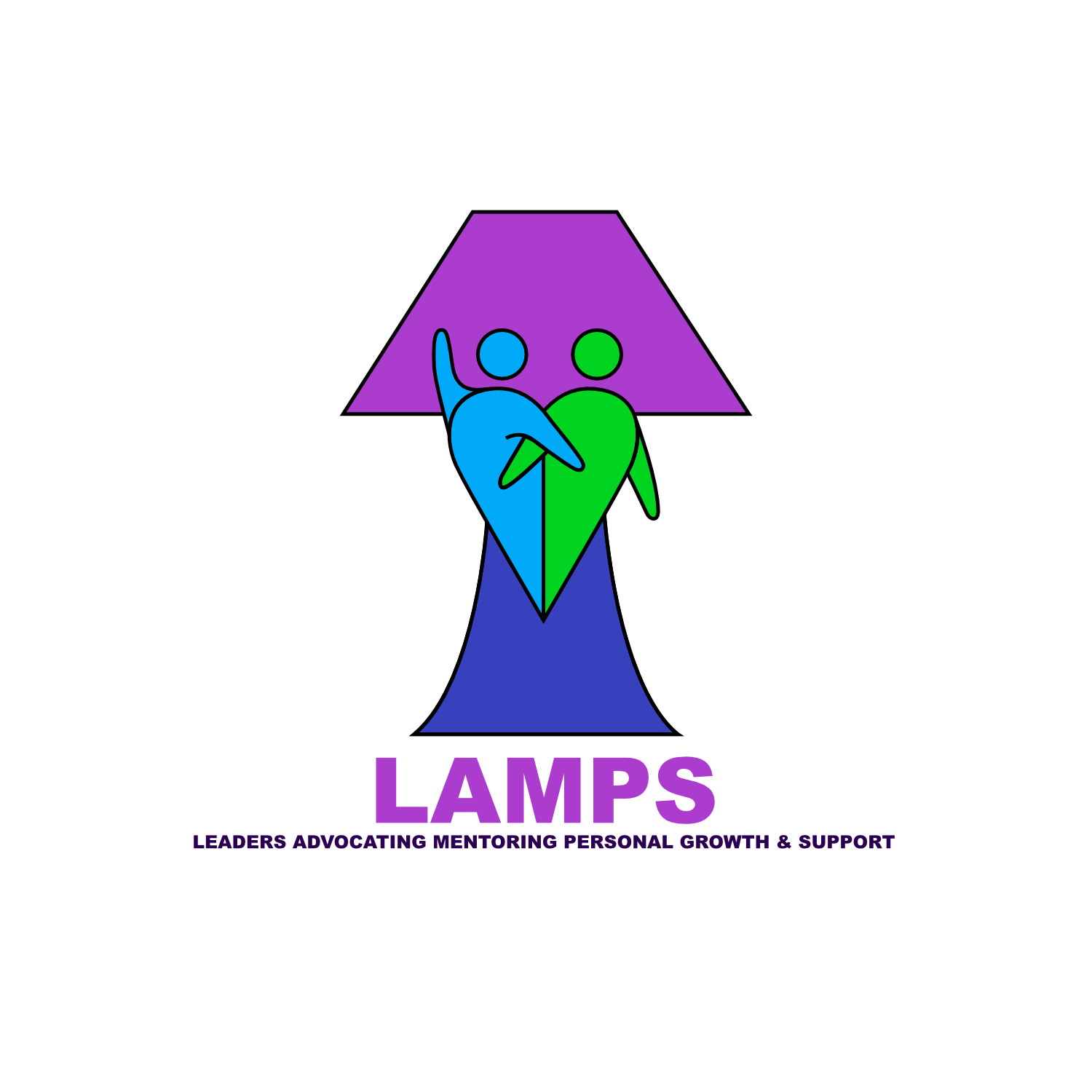Silence Hinders Understanding of Stigmas with HIV

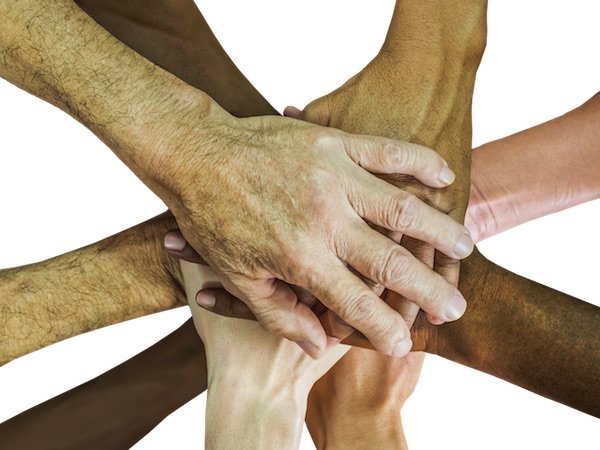

stigma
Poetry by Alicia Eaton, 6/14/18
Put me in a box you will not do
Because words you’ve heard you thought were true
I live, walk, and breathe just like you
Paint a scarlet letter on me because it’s what you do
My life is full of joy and laughter
Why try to stigmatize me and destroy that laughter
Destroying my life, is that a part of your stature?
Or is it because within yourself you feel disaster?
Stigmas cut deep and far in between
So don’t just go off of what you’ve heard or seen
Stigma is that word that can destroy a life whether you know it or not
By using hurtful words and stirring the pot
Statistics’ Taken Into General Minds and Accelerated
That’s what stigma means to me
But building and encouraging lives helps them feel free
Free to carry on without a care in the world
To hold their heads high without having them tainted or whorled
Stigma is just a part of what goes on in the human mind
But it’s a great part that makes them so unkind
Keep your head up, walk strong proud
Then shout to the rooftops, and cry aloud
I’m here, I’m free, I’m living , and I’m me
Because your stigmatisms will no longer destroy me
SHUSH
by Frances Moye
We have to break the silence when it comes to the topic of HIV. Anyone can contract HIV no matter your race, sex, age background, education or job title. If you are having unprotected sex, you are at the risk of catching the virus.
I know it can be a touchy subject which makes many feel uncomfortable. Let’s talk about HIV. Don’t be afraid to bring the topic up in a conversation. Stop the silence! Let’s talk more about the virus. It could start the process on lowing the rate of new cases of HIV as well as lowering the stigmatism that is related to HIV.
Our conversations about HIV can impact someone’s life. So let’s be mindful of our reactions and responses when having these conversations. For the good reason that it can cause a set back when one accidentally blurts something inappropriate. Stigmatism can quickly silence your family and friends who may have contracted HIV. They most likely will be hesitant to disclose their information with you because of the stigmatism that is attached to HIV. As a result your family or friends will become silenced. This will leave them feeling isolated, and they will have to deal with this issue alone. Remember your reactions or responses on conversations about HIV can be impactful.
People are often busy putting stigma on others with HIV without even knowing their own status. Don’t be too quick to judge, especially when you are unaware of your own status. Let’s be conscious that a negative HIV test can EXPIRES. Yes it EXPIRES! Having sex with a cheating parther, it can EXPIRE. Having sex with someone who has multiple sex partners, it can EXPIRE. Not using protection while having sex, it can EXPIRE. Sharing needles or using any devices where blood can be transferred from one person to another, it can EXPIRE. Unfortunately, an HIV status can quickly change from a negative result to a positive result. A marriage license or true love does not protect you from the virus as well.
Certain behaviors and myths of this disease are taught as a result of our conversations and environment. Parents give your children the correct information and tools to protect themselves. Don’t let social media give your children the wrong information. Young people can be very impressionable because they have to deal with the daily effects of peer pressure and social media. Parents, you can inadvertly teach your children how to express stigmatism and a negative outlook towards someone with the virus. Moreover, your negative conversations or reactions towards someone living with HIV can be passed on to them. Your children will then most likely inherit your stigmatizing behavior as well.
Just imagine if you contracted HIV how would you want people to treat you? Just expand your imagination a little further, were you the one who had a stigma towards people with HIV? Will you stop stigmatizing others or will you start stigmatizing yourself? Yes yourself. There are people living with HIV who allow stigma on themselves due to the stigma that is attached with the disease. Many may say “Oh get over what people say about you.“ It may not be that simple for everyone. Social media and environment can be a factor to someone demise. Let’s use bullying on social media for an example. People are bullied by social media through consistantly negative comments. This bully behavior could make a person depressed and suicidal, as well as easily turning to drug and alcohol to ease their pain. Some people just cannot handle the stigma without extra support or counseling, and due to the stigma they are not likely to talk. Thus, the problem, the stigma, is never resolved and the support may never be sought out. The vicious circle continues.
Get educated and don’t be in denial with the fact that this could not happen to you. If you are having unprotected sex it could happen. You cannot weed out people with HIV by looking at someone’s outer appearance or by getting the green light from a relative or friend on a potential sex partner. Therefore one can be passing on the virus to others without even knowing it. Just because you are not sick does not mean you do have the virus. Get tested!
People, at the end of the day, you are responsible for your own health. Get tested stay on top of your health. Be smart. Get tested. The power is in your hands. Get the real facts on ways on how to avoid exposure to HIV and other sexual transmitted diseases.
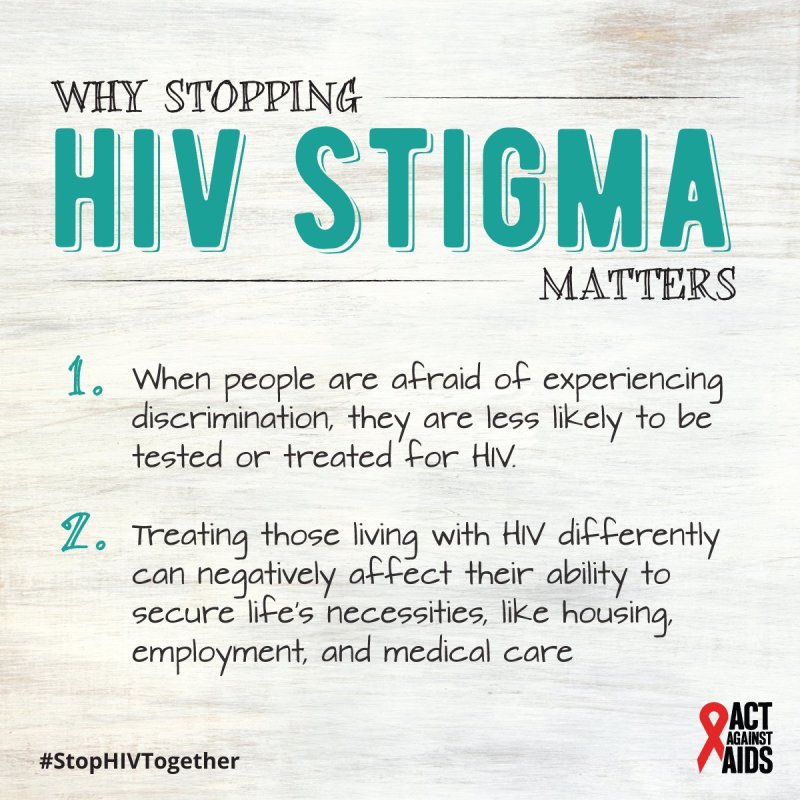
This Game-Changing Pill Protects Against HIV.
It Isn’t Reaching The People Who Need It Most.
A failure of outreach and a legacy of racism in medicine are preventing queer black men from using PrEP, experts say
by Carolina Moreno, Huffington Post
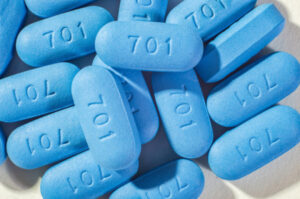
Montreal Canada – October 8, 2015: Pills used for HIV Pre-Exposure Prophylaxis (PrEP).
Lamar Shambley began dating his ex-boyfriend about a year after the FDA approved PrEP, a once-daily oral pill used to reduce a person’s risk of contracting HIV through sex. He now looks back on that relationship in near disbelief: The two mostly had unprotected sex together and he admits he wasn’t always sure of his partner’s HIV status.
“I was just thinking the other day, ‘Damn, I had no idea what PrEP was then,’” the 30-year-old high school teacher, who identifies as gay and black, told HuffPost. “I could have very well [contracted HIV] in those two and half years.”
And for good reason: A daily dose of PrEP reduces a person’s risk of contracting HIV from sex by more than 90 percent.
But that popularity has not extended to everyone in the community. Queer black men, for example, are far less likely than their white counterparts to take PrEP.
A recent report from the Centers for Disease Control and Prevention found that while 50 percent of the 1.1 million Americans ― 500,000 people ― who could benefit from PrEP were black, African-Americans accounted for only 1 percent of those filling PrEP prescriptions ― just 7,000 people.
That’s particularly noteworthy because black men who are gay or bisexual are overwhelmingly affected by HIV compared to any other group in the United States, accounting for 26 percent of new HIV diagnoses in 2016. Seventy-five percent of these men were between the ages of 13 and 34.
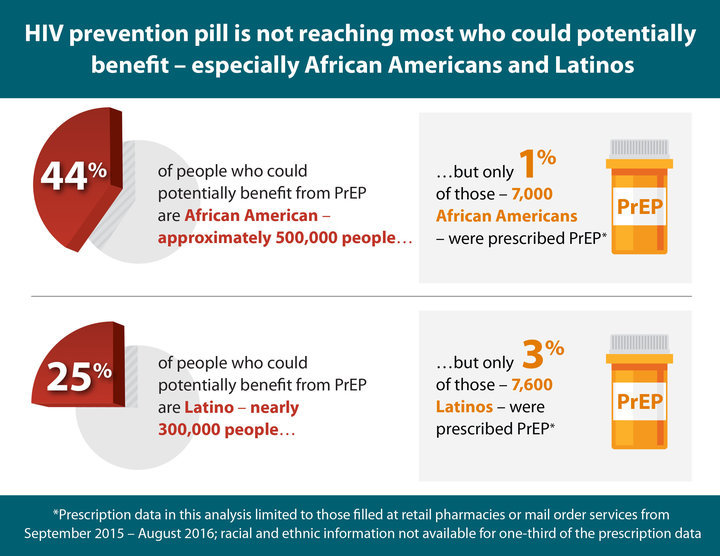
This disproportionate impact on the queer black community continues despite the fact that the U.S. has seen an overall decline in the number of new HIV diagnoses — which fell 18 percent from 2008 to 2014.
CDC researchers largely attribute the drop to public health efforts encouraging people to get tested or start HIV treatment, which potentially can make the virus undetectable and untransmittable in a patient. The agency says PrEP may have also played a role in preventing new HIV diagnoses during that time.
But the uptake of PrEP among queer black men remains low and reflects broader health disparities affecting the black community in the U.S. ― from higher maternal mortality rates to lower heart attack survivorship. Those inequalities are due to a confluence of factors, including more limited access to health care, higher rates of unemployment, lower incomes and social stigmas.
Experts say the discrepancy in PrEP usage can also be attributed to insufficient outreach to queer black men and a mistrust of medicine within the black community rooted in a long and painful history of racial injustices by the medical establishment.
Public health advocates say understanding these dynamics and using more culturally-competent messaging is key to increasing PrEP uptake in the black community ― a population that, they insist, already has an appetite for information about the pill.
When Phill Wilson, founder and CEO of The Black Aids Institute, analyzed the data on PrEP uptake from the CDC, he was hardly surprised to see how few black Americans are taking the pill. “One of the reasons is because there has not been a large enough, robust enough, effort to even introduce PreP in those communities,” he told HuffPost.
Wilson, who has spent nearly 20 years at the head of the institute, described initial messaging for PrEP as geared mainly toward white gay men. Little to no attention was given to black and brown communities, or women, until recently, he said.
“It’s like you release a movie and you do not advertise it or promote it, at all,” he mused. “And then you wonder, ‘Why didn’t anyone come to my movie?’”
PrEP Outreach Has Traditionally Skewed White
The San Francisco Department of Public Health, like many city health agencies, has grappled with how to effectively introduce PrEP to the black community.
A city official acknowledged that a 2016 PrEP campaign failed to reach the city’s black residents in part because public ads featured overly sexualized black and brown people partying and drinking ― negative stereotypes that repelled potential patients. Nikole Trainor, a PrEP health educator, said billboards for the campaign were also mainly placed in predominantly white gay neighborhoods, like The Castro.
In February, the city launched a new campaign, “PrEP Supports,” in the hopes of reaching more black residents in the Bay Area. Trainor, the lead coordinator on the campaign, told HuffPost that the new initiative seeks to overcome mistakes of the past campaign.
After the first campaign, Trainor said she heard certain conspiracy theories ― that PrEP was designed by the government to harm the black community, for example ― from many of the men she counseled. “When I was out there in the communities, I was told by some young black men that I was a traitor, and [asked] why was I promoting this drug for our community,” said Trainor, who is black.
Billboards for this year’s “PrEP Supports” campaign have been placed in neighborhoods of color and Trainor said messaging was also placed on buses and trains that travel across the city so no one community feels explicitly targeted.
“In communities of color, trust and relationship building is huge and I think that’s where we’ve missed the mark,” she added. “What we’ve heard before from my personal conversations is that it all centers around mistrust. You have a government agency and [people think]: ‘They don’t support any of our social justice issues and now they want us to take a blue pill?’”

‘Why Hasn’t Anybody Talked To Us About This Before?’
Wilson insists it’s not a lack of willingness but a lack of information that results in low uptake of PrEP in the black community. During a national PrEP tour designed by the Black AIDS Institute last year, he said attendance at sessions was four times higher than expected and many attendees frequently asked, “Why hasn’t anybody talked to us about this before?”
For Wilson, further proof of the widespread interest came less than three months ago after the institute opened a new weekly prevention clinic, which offers PrEP services. Within the first several hours of the first day, he said they tested 29 people for HIV and about 20 percent of these patients agreed to receive a PrEP prescription.
“When you offer PrEP to black people and the people who are offering the services are black, the people doing the outreach are black, and the messages that are being created are created by black people ― black people are interested,” Wilson said.
“When you offer PrEP to black people and the people who are offering the services are black… black people are interested.”
–Phill Wilson, founder and CEO of The Black Aids Institute
Preston Mitchum, a policy analyst for Advocates for Youth, a sexual and reproductive health nonprofit based in Washington, D.C., echoed Wilson’s point on how ineffective messaging has left the black community even more vulnerable to HIV.
“It’s not as though black people don’t want information,” said Mitchum, who identifies as gay and black, and has been taking PrEP for more than a year. “It’s whether the access to that information is provided to black people.”
The 32-year-old lawyer and activist said he often finds himself having unexpected in-depth conversations about PrEP with white queer men at clubs and bars, but that black LGBTQ men generally know very little about the pill.
“Why is it that we’re not talking about PrEP more in black communities?” he said. “Why are pharmaceutical companies not driving the PrEP conversation in a way that’s culturally sensitive, culturally competent ― in ways that impact us?”
Overcoming A Legacy Of Racism
Perry Clark first heard of PrEP in 2014 ― the pill, it’s function and usefulness would frequently come up during dinner with his non-black friends. The 41-year-old marriage and family therapy associate, who identifies as gay and black, told HuffPost he was mainly intrigued by the pill because he “didn’t want to be a statistic.”
“At first, I was pretty much on the fence,” said Clark, who lives in the San Francisco Bay Area. “I was one of those that argued that it’s not 100 percent [protection]. But after a while, I remembered nothing is 100 percent except death.”
Clark, who’s now been on the pill for almost three years, is thankful for PrEP and the periodic monitoring he gets alongside it. But he said he pushed through feelings of distrust within his community in order to get the care he needs.
“I have dealt with some people who argue that aspect of, ’You’re trusting medicine, but they have poisoned us in the past,’” he said. “And it’s like, yeah they have done that. And, yet, what is our alternative? … We still need to function in this world and right now this is one of the best options I have. I’m not going to trust my health to your mistrust.”
“I have dealt with some people who argue that aspect of ‘You’re trusting medicine, but they have poisoned us in the past.’ And it’s like, yeah they have done that. And, yet, what is our alternative?”
–Perry Clark, PrEP user
Harriet A. Washington, author of “Medical Apartheid” ― a comprehensive history of the ways in which the medical establishment has used black Americans as test subjects without their knowledge or consent ― believes that the problem is not black mistrust but an untrustworthy health care system.
“The focus tends to lie on African-American distrust, but African-American distrust is only half the problem,” she told HuffPost. “If we only focus on African-American mistrust, the implication is there’s something pathological or at least erroneous within African-American culture of thinking. And that’s not the case.”
Mitchum agrees
.
“I emphatically believe the centuries-old racism and sexism in medical spaces is why black folks do not trust providers in ways that are going to be helpful to us,” Mitchum said. “To be honest, I should probably be more nervous going to a provider than I am.”
“I believe that for the medical community to come to terms with hopeful uptake of PrEP in black communities, we have to reconcile with the medical racism that has occurred for hundreds of years,” he added. “If not, we’re not going to get an uptake of PrEP. And we’re certainly not going to defeat HIV.”
I’m HIV Positive and People Are Still Afraid To Touch My Hand
Benjamin M. Adams, Poz Contributor
It’s 2017. But too often people are somehow still unaware that HIV cannot be transmitted through non-sexual human contact. Sometimes it feels like little has changed since Ryan White was physically shunned like a leper by an entire community because of his HIV status in the earliest days of the disease. The road to acceptance is clearly an arduous endeavor, and it’s evident in the way HIV-positive patients are treated today.
I recently visited a medical marijuana dispensary, which I won’t name, on Naples island near Long Beach, California, for my weekly re-up. That particular dispensary had implemented a compassionate program, which gives complimentary grams of medical marijuana to HIV-positive patients if they present a valid diagnosis form. The dispensary was marked with a gay flag indicating that they cater and support HIV and AIDS patients. Because I needed much more than a gram, I also ordered some additional medical marijuana.
Because I was listed in the compassionate program, which is only available to HIV-positive patients, the budtender was well aware of my HIV status. When I pulled out my $20 bill, he cautiously took a small step back, and his face turned a pale hue with a unconcealed expression of panic. A bead of sweat materialized on his forehead as he frantically searched for a way to ring me up without touching the bill that I was paying with. “Just leave it on the table,” he said. He got my change out of the till and put it on the table. “Thank you, and have a nice day,” he said, gazing into nowhere as he shifted his eye contact to the next customer. The budtender clearly didn’t want to come into contact with the $20 bill that had touched my hand, like it was laced with cyanide.
You’d figure that medical marijuana budtenders would be used to patients with serious illnesses—but the stigma surrounding HIV and AIDS persists everywhere.
How is it possible that in our day and age, people are still unaware that HIV can only be transmitted through sexual contact or a blood transfusion? We’ve known that HIV cannot be transmitted through hugging, kissing, sharing glasses, or any kind of non-sexual human contact since 1986. That was 31 years ago.
Ryan Wayne White was diagnosed with HIV after receiving a contaminated blood transfusion in December 1984. He was only 13 years old at the time. Living in Komono, Indiana with HIV must’ve been rough in the mid-‘80s. To make a long story short, White was heartlessly shunned by the entire local community because of the fear of exposure to the HIV virus. Both teachers and students at the Western Middle School near Komono turned on the boy and rallied to ban White from attending school. In total, 117 parents and 50 teachers signed a petition to quarantine White from the rest of the school students. When White was finally able to return to school, 151 students skipped school that day. White would end up never attending gym class, because of stubborn fears from his peers and teachers.
He would be forced to endure being called “queer” from his classmates and neighbors for the next four years, and at one time, White and his family survived a possible drive-by shooting incident. But White was neither gay nor Latino or black, which would be the reason he would become the face of the AIDS in America. Most discerning Americans suddenly realized that AIDS was not limited to the homosexual black and Latino communities.
At the time of his diagnosis, the HIV had already progressed to AIDS, and doctors told White he only had six months to live. He would go on to live six years, nearly making it to his high school graduation before his death on April 8, 1990. White’s family received 6,000 letters of support in the wake of his death.
A mere four months after White’s death, U.S. Congress would pass the Ryan White CARE Act on August 18, which helps cover the cost of my treatment today. The act would go on to be reauthorized by Congress in 1996, 2000, 2006 and 2009.
There are plenty of other STD’s to worry about other than HIV. Some can be equally deadly or worse, including HPV or Syphilis. The irrational fear of HIV, which casts a shadow over almost any other STD, needs to go. The unbalanced criminalization of HIV needs to go as well.
A fairly new concept has emerged that HIV-positive patients who are legitimately undetectable cannot transmit the virus, even through unprotected sex. The “Undetectable equals Untransmissible” campaign works to educate HIV-positive patients that staying undetectable means that they cannot infect others. On March 6, 2017, the AIDS United Public Policy Committee issued a statement, strongly affirming that those with sustained undetectable levels of the HIV virus cannot transmit the virus, event via unprotected sex.
“This is a landmark development in the response to HIV and too many people are not hearing this message and receiving its full benefit,” stated AIDS United President & CEO Jesse Milan, Jr. “A person living with HIV with a sustained suppressed viral load poses no risk of transmitting HIV.” NAM aidsmap, the Canadian AIDS Treatment Exchange and authorities from the National Institutes of Health-AIDS Division all agree.
The largest-ever HIV transmission risk trial recently took place in Australia. Researchers from The Kirby Institute at the University of New South Wales interviewed 358 mixed-status homosexual couples from Brazil, Thailand and Australia between 2012 and 2016. All HIV-positive partners were had undetectable levels of the HIV virus in their bloodstream. The couples reported having condom-less sex over 17,000 times and not a single HIV-negative trial participant reported new HIV infections. The study was presented on July 25 at the IAS Conference on HIV Science, in Paris, France.
The fear of human contact with HIV-positive patients is completely unwarranted, and it’s time that people start hugging HIV-positive patients once again. Don’t worry. You are safe.
